Eriodictyon angustifolium, Narrowleaf Yerba Santa
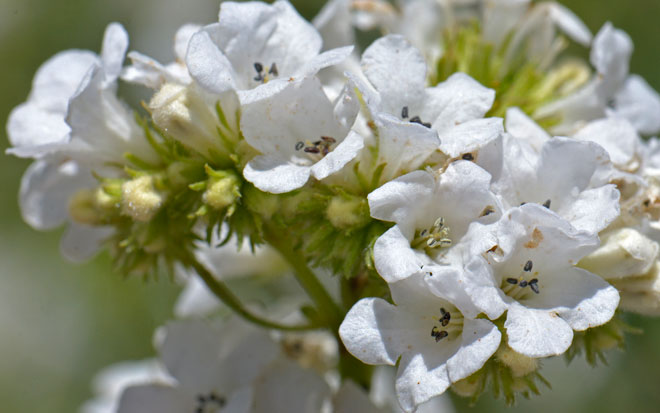
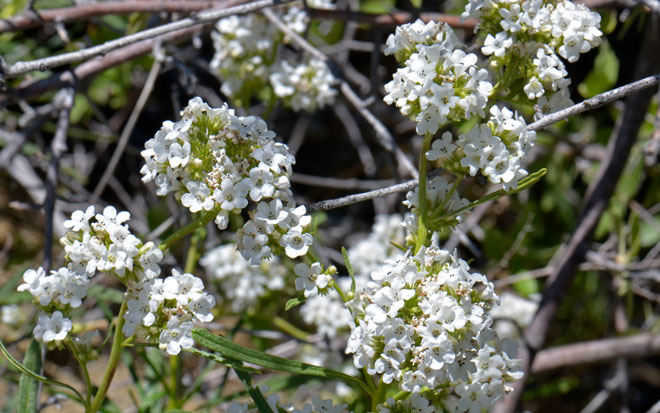
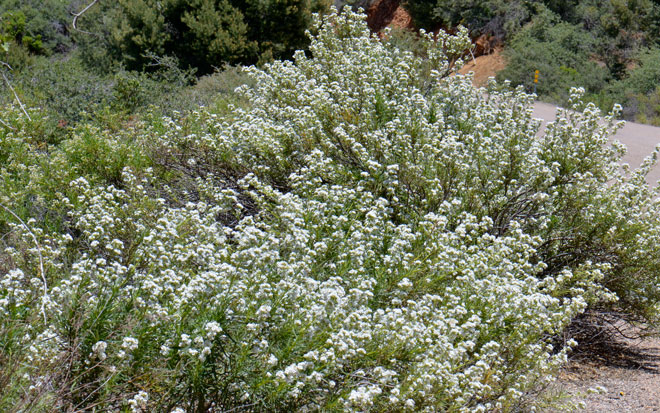
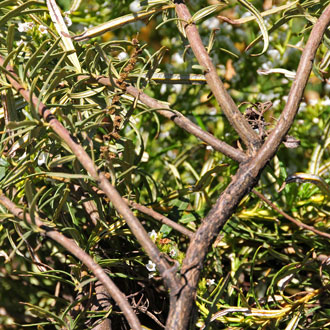
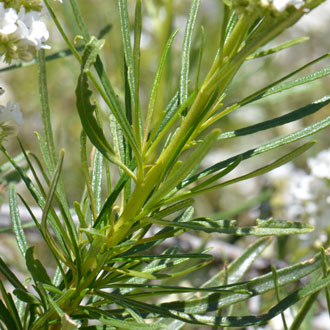
Scientific Name: Eriodictyon angustifolium
Common Name: Narrowleaf Yerba Santa
Also Called: Narrowleaf Yerbasanta, Narrow-leafed Mountain Balm, Narrow-leafed Yerba Santa, Yerba Santa, (Spanish: Hierba Santa)
Family: Hydrophyllaceae (Boraginaceae, Hydrophylloideae), the Waterleaf Family
Synonyms: (Eriodictyon angustifolium var. amplifolium)
Status: Native
Duration: Perennial;
Size: Up to 6 feet or more.
Growth Form: Shrub; erect, stems glabrous or sticky.
Leaves: Green, dark glossy green; narrowly linear or lanceolate, short-petiole or sessile, leaves glabrous or resinous above, white tomentose beneath, leaf margins entire or dentate, revolute.
Flower Color: White; showy flowers, 5 petals flowers numerous in scorpiod cyme, corollas broadly funnelform, glabrous to sparsely hairy, fruit a capsule.
Flowering Season: April to August, earlier in California June to July.
Elevation: 2,000 to 7,000 feet.
Habitat Preferences: Dry slopes, common in chaparral, uncommon in California.
Recorded Range: In the United States Narrowleaf Yerba Santa is found in the west in; AZ, CA, NV and UT. It is also native to northern Baja California, Mexico.
North America & US County Distribution Map for Eriodictyon angustifolium.
U.S. Weed Information: No information available.
Invasive/Noxious Weed Information: No information available.
Wetland Indicator: No information available.
Threatened/Endangered Information: No information available.
Genus Information: 9 species in Eriodictyon in the United States. 1 species in Arizona.
The Plant List includes 16 scientific plant names of species rank for the genus Eriodictyon. Of these 9 are accepted species names.
Comments: Narrowleaf Yerba Santa is a common plant in Arizona above 2,000 feet.
The Paiute used Narrowleaf Yerba Santa as a cold remedy and cough medicine and the Hualapai used this plant as a dermatological and gastrointestinal drug. See ethno-botanical uses at Native American Ethnobotany, University of Michigan, Dearborn.

